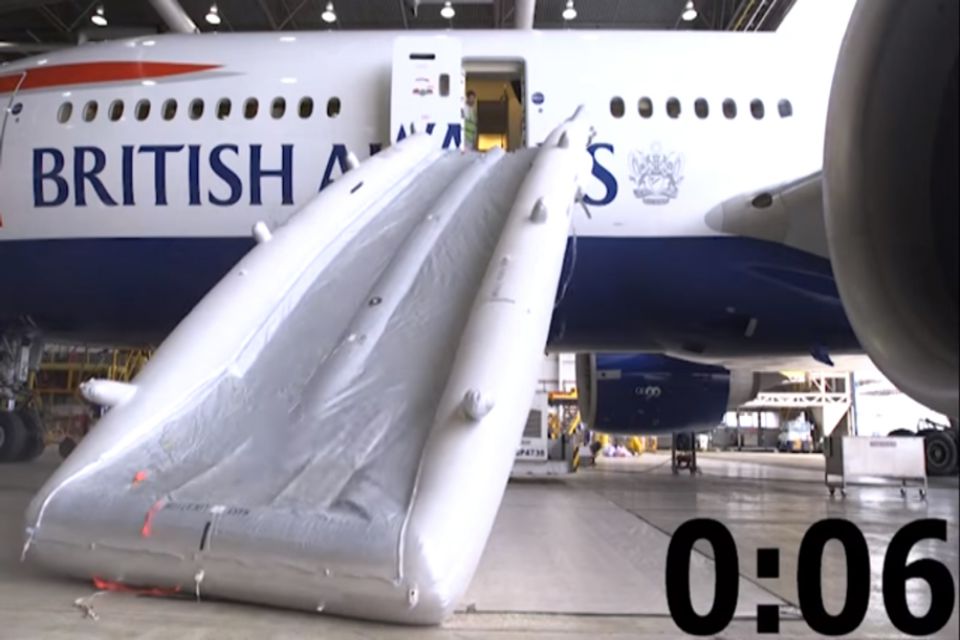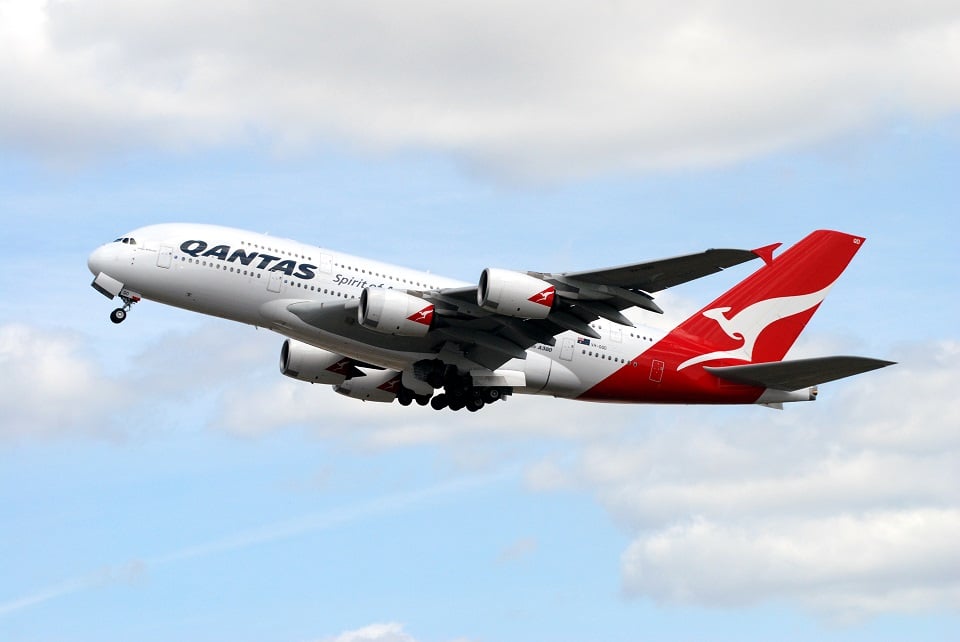Aviation
British Airways explains how an evacuation slide works : Video

While it’s exceptionally rare for an aircraft’s slides to have to be deployed, every commercial aircraft is fitted with a number of them, to ensure that in the event of an emergency, customers can get off the aircraft quickly and safely. The huge inflatables which can be up to 14 metres (or 46 ft) long, are a crucial part of an aircraft’s safety kit.
Safety is British Airways highest priority, and the airline has created a behind-the scenes video, giving access to rarely seen regular tests on its evacuation slides.
During the film, British Airways licensed engineer Peter Dyer explains that every British Airways aircraft is fitted with evacuation slides, and these systems are checked on an almost daily basis. The airline’s highly trained engineers also frequently ‘blow’ the slides to ensure they work properly.
The aircraft shown on the video is one of British Airways’ Boeing 777-200 planes at Gatwick, which is fitted with eight slides. Peter Dyer explains that if the aircraft door is opened when it is in what is known as the ‘automatic’ position, the slide will automatically deploy. Incredibly, it takes just six seconds to fully roll out.
If you’ve ever heard cabin crew being asked to ‘cross check’ a door, Peter explains that ‘Doors to automatic’ or ‘manual’ are the positions the door needs to be in prior to taking off and landing, so that they can be used in an emergency. Cross checking is a way of cabin crew making sure that they are in the correct position. They shouldn’t be armed (ie, with slides ready to inflate) when the aircraft is about to arrive at the stand to start disembarkation.
The video can be viewed here.

Aviation
Lost Tool Found in Qantas A380 After 34 Flights

An Australian Transportation Safety Bureau (ATSB) investigation recently revealed that a Qantas A380 operated 34 flights with a 1.25-meter nylon tool lodged in one of its engines.
This turning tool, used during borescope inspections to rotate the intermediate-pressure compressor, was left behind during scheduled maintenance at Los Angeles on December 6, 2023. It remained inside the engine until it was discovered by maintenance staff during a subsequent check at Los Angeles on January 1, 2024.
China Takes the Lead in Sixth-Generation Fighters with White Emperor B
The ATSB report highlights two critical lapses. First, maintenance engineers failed to notice the tool during final checks for foreign objects after the borescope inspection. Second, the lost tool procedure was not activated when the tool was identified as missing.
The certifying engineer ultimately cleared the aircraft for service without accounting for the misplaced tool. During the time qantas films the tool was inside, the A380 completed 34 flight cycles, accumulating nearly 294 hours without any noticeable effect on engine performance.
Although the tool was deformed by high-energy airflow within the engine, there was no reported damage to the engine itself. ATSB Chief Commissioner Angus Mitchell commented.
India’s C-295 to Gain Advanced Weapons for Maritime Surveillance
“This incident underscores the importance of following established maintenance protocols. Engineers missed the tool during foreign object checks, and the required lost tool procedure wasn’t started after realizing the tool was missing.”
Following the investigation, the airline issued a safety directive, urging all engineering and tool storage teams to adhere strictly to these protocols to prevent similar incidents in the future.
A qantas spokesperson stated, “While the tool didn’t impact engine performance, we take this incident very seriously. It is critical to follow the correct lost tool procedures.”
-

 Aviation2 months ago
Aviation2 months agoBoeing confirms 797: A New Era for Mid-Size Aircraft
-

 Aviation2 months ago
Aviation2 months agoMicrosoft Flight Simulator Raises $3 Million to Bring Back the An-225 Mriya
-

 Aviation2 months ago
Aviation2 months agoLockheed and Tata Team Up to Build C-130J MRO Facility in India
-

 Airlines2 months ago
Airlines2 months agoQantas Engineers Stage Walkout Over Cost of Living Concerns
-

 Airlines2 months ago
Airlines2 months agoQatar Citizens Can Travel to the United States Without a Visa
-

 Aviation2 months ago
Aviation2 months agoBoeing Offers 25% Pay Increase & Promise to Build Next Plane in Seattle
-

 Aviation2 months ago
Aviation2 months agoQatar Airways bans these new Electronic Devices on plane
-

 Airlines2 months ago
Airlines2 months agoEmirates Ends 28-Year Singapore-Melbourne Fifth Freedom Route








